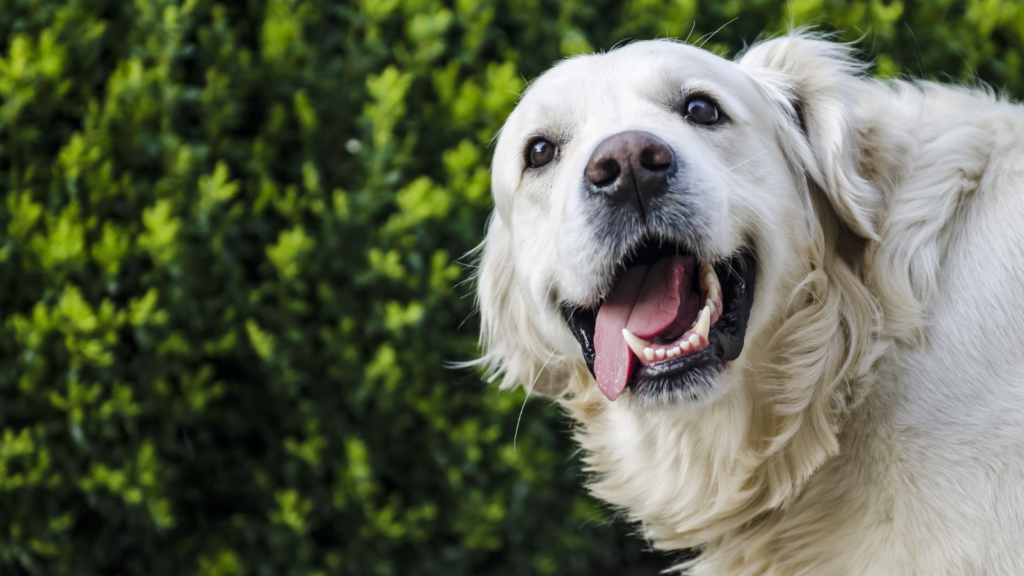When it comes to our furry companions, dogs have a knack for charming us with their peculiar behaviors. One such endearing yet baffling sight is catching our canine friends taking a nap with their tongues playfully sticking out. As dog lovers, we’ve all been there, wondering what prompts this adorable and seemingly unconventional sleeping position.

In this article, we’re going to delve into the world of dog behavior and explore the reasons behind why some dogs sleep with their tongues out. So, let’s embark on this intriguing journey of unraveling the quirky behavior of our four-legged pals.
Dogs often sleep with their tongues out due to a combination of muscle relaxation during deep sleep and their limited ability to regulate body temperature through panting. This behavior helps them cool down and find a comfortable sleeping position, showcasing their individuality and unique traits.
Disclaimer: This post may contain affiliate links. We only recommend high-quality products that are used and recommended by real owners. If you use these links to buy something we earn a small commission.
The Physiology of Canine Sleeping Positions
Exploring Different Sleeping Poses
From the classic “belly-up” position to the “curled into a ball” stance, dogs exhibit a wide array of sleeping poses. Among these, the “tongue out” position stands out as a particularly captivating and amusing posture.
The Role of Muscle Relaxation
When a dog falls into a deep sleep, its muscles relax, and its body assumes positions that may not be typical when they are awake. The relaxation of the muscles in the face and jaw could lead to the tongue naturally protruding.
The Cooling Mechanism: Dogs and Temperature Regulation
Dogs’ Limited Sweat Glands
Unlike humans, dogs rely heavily on panting as their primary method of regulating body temperature. With a limited number of sweat glands, panting helps dissipate excess heat. Sleeping with the tongue out could be an extension of this thermoregulation mechanism.
The Evaporative Cooling Effect
As a dog pants, moisture evaporates from its tongue, tongue, and oral cavity, providing a cooling effect. This behavior is especially prominent during warmer periods. Sleeping with the tongue out might help dogs achieve this cooling effect even during rest.

The Comfort and Security Factor
Creating a Comfortable Sleeping Environment
Dogs, like humans, seek out the most comfortable sleeping positions. The “tongue out” pose could be a result of a dog finding a cozy spot that happens to encourage its tongue to protrude slightly.
Feeling Safe and Secure
Dogs are known to exhibit vulnerable behaviors when they feel safe and secure in their surroundings. Sleeping with the tongue out could indicate that the dog is in a state of complete relaxation and trust.
The Quirks of Individuality: Every Dog is Unique
Canine Personalities and Sleeping Habits
Just as humans have their idiosyncrasies, dogs also have unique personalities and habits. Some dogs might naturally prefer sleeping with their tongues out due to their individual quirks.
Breed and Genetic Factors
Certain breeds are more prone to specific behaviors, including sleeping positions. Genetics could play a role in why some dogs are more inclined to snooze with their tongues out. Here is a list of breeds that may be more likely to sleep with their tongue hanging out:
- Bulldog: Due to their unique facial structure and shorter snouts, Bulldogs may find it more comfortable to rest with their tongues out.
- Pug: Similar to Bulldogs, Pugs have flat faces that can make it easier for their tongues to hang out during sleep.
- Boxer: Boxers are known for their playful and sometimes goofy personalities, which might lead them to sleep in amusing positions, including with their tongues out.
- Boston Terrier: Another flat-faced breed, Boston Terriers may exhibit the tongue-out sleeping pose as a result of their facial structure.
- Chow Chow: Chow Chows have a thick coat and may stick their tongues out during sleep to help regulate their body temperature.
- Bull Terrier: With their distinctive egg-shaped heads, Bull Terriers may occasionally sleep with their tongues out, adding to their unique appearance.
- English and French Bulldogs: Like their cousin, the Bulldog, these breeds often sleep with their tongues out due to their short snouts.
- Shih Tzu: Shih Tzus may relax their facial muscles during deep sleep, causing their tongue to hang out.
- Pekingese: This toy breed might be seen snoozing with their tongues out, especially in warm weather.
- Lhasa Apso: Lhasa Apsos have a longer coat, and they might stick their tongues out to help cool down.
- Japanese Chin: Known for their charming appearance, Japanese Chins might occasionally sleep with their tongues out, enhancing their cuteness.
It’s important to note that while certain breeds may be more prone to sleeping with their tongues out due to their anatomy or characteristics, individual dogs within any breed can have their own unique sleeping preferences and behaviors.

Frequently Asked Questions
FAQ 1: Is it normal for dogs to sleep with their tongues out?
Yes, it’s relatively normal. Many dogs exhibit this behavior during deep sleep as a way to regulate their body temperature.
FAQ 2: Should I be concerned if my dog frequently sleeps with its tongue out?
Not necessarily. If your dog appears healthy and exhibits no signs of discomfort, sleeping with the tongue out is usually harmless.
FAQ 3: Are certain breeds more likely to sleep with their tongues out?
While it can vary, some flat-faced breeds might be more prone to this due to their unique oral and facial structure.
FAQ 4: Should I adjust my dog’s sleeping environment to prevent this?
It’s not essential unless your dog seems bothered. Providing a comfortable and safe sleeping space is generally sufficient.
FAQ 5: Can I gently adjust my dog’s tongue if it’s hanging out?
It’s best not to interfere with your dog’s sleeping position. Let them rest naturally and comfortably.
Conclusion
In the realm of dog behavior, the “tongue out” sleeping pose adds yet another layer of charm to our beloved pets. This seemingly quirky habit often boils down to a combination of muscle relaxation, thermoregulation, comfort, and individuality. So, the next time you catch your furry friend in this amusing slumber, rest assured that it’s just another fascinating facet of the intricate world of dog behavior.



